Dry food for sterilized cats: properties, manufacturers, selection and diet
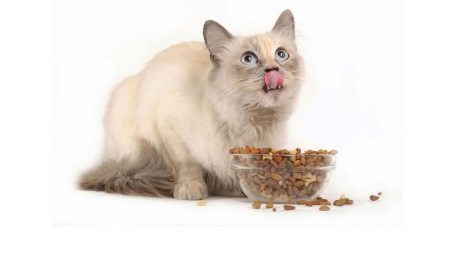
When owners are faced with the need to neuter their cats, they need to understand that this process will have a significant impact on the pet's metabolism, body constitution, behavior and lifestyle. Therefore, one of the important components of supporting a pet after castration is a properly selected, balanced diet.
Features, pros and cons
Sterilization or castration in general affects the pet, rather, happily: the pet lives longer, becomes more balanced, aggressiveness decreases, and it no longer has to mark its territory.
But there can be negative consequences as well. Stagnation occurs in the urinary system, since a decrease in the secretion of steroid hormones disrupts ion exchange in the kidneys, causing fluid retention. For neutered and neutered cats, it is quite common to have occasional trips to the toilet.
This leads to the formation of stones in the calyx-pelvis system, ureters, bladder infection. The restructuring of the hormonal background, together with a calm disposition, causes the cat's laziness to appear, he plays less willingly and moves much less.
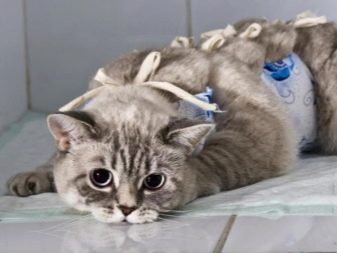
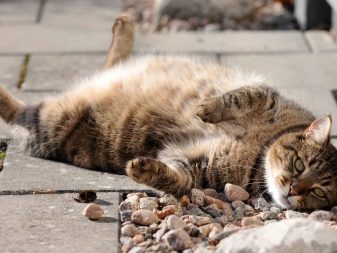
Also, a decrease in estrogen and testosterone seriously reduces the rate of fat metabolism, in particular decay, which, in combination with a new lifestyle, leads to faster fat swimming in the sides and abdomen of your pet. An increase in prolactin levels also contributes to this, leading to an increased sense of appetite.
To stop all these problems, it is necessary, first of all, to choose the right food., then make up a diet for the pet and strictly adhere to it.
You should choose a special dry food for neutered cats and neutered cats - these are the recommendations of veterinarians. Manufacturers of such feeds must indicate the exact size of the portion, depending on the constitutional characteristics, weight and other parameters of the animal.
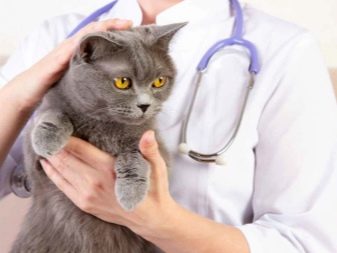
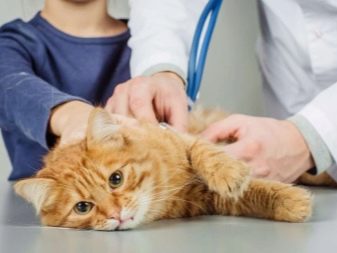
In addition, you need to follow some more recommendations:
- the pet switches to fractional feeding: the frequency of feeding can increase up to five times a day, but the portion sizes are reduced;
- to reduce the risk of kidney and ureteral stones in your pet, limit the intake of phosphorus and magnesium into the body, since sterilized pets form stones of predominantly phosphate and magnesium nature;
- the animal should be weighed regularly in order to assess the dynamics of weight and adjust the portion accordingly.
Specialized food is selected a couple of months before the operation, and the pet is gradually transferred to it, so that after the surgery, such changes in the menu do not become unnecessary stress for him.
The special feed has a number of obvious advantages. Firstly, the recipe is selected in advance by specialists, it is almost guaranteed to include everything your pet needs in the correct proportions. Moreover, when preparing food on your own, you will most likely come across the fact that your cat is picky and does not eat all the ingredients in a row, ignoring, for example, vegetables.
Secondly, industrial food also saves you time, since you do not need to cook it, and the cat will not be able to miss any of the components past its belly, since all food is a homogeneous substance. Thirdly, dry food is more versatile in terms of the terms and conditions of storage - it does not dry out in the open air and is easier to transport.
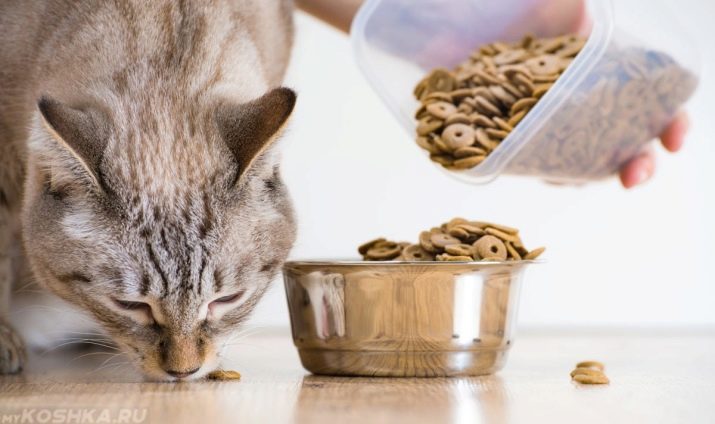
Regardless of the chosen nutritional model, the ratio of macronutrients should be approximately as follows:
- 30-40% proteins;
- 10-12% fat;
- 30–45% carbohydrates with 5 to 7% fiber.
When choosing dry food, you should not focus on beautiful packaging and cool advertising slogans. You should decide on the price segment in which you will choose: holistic, premium or super-premium, as well as professional diets. It is worth immediately discarding options such as Kitekat, Whiskas, Friskes and the like: in such feeds there is no division into physiological groups of animals.
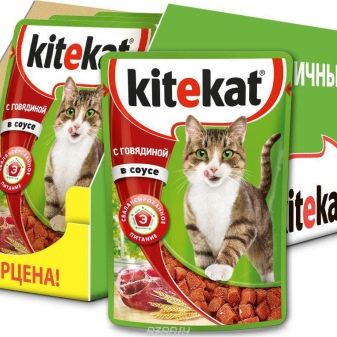
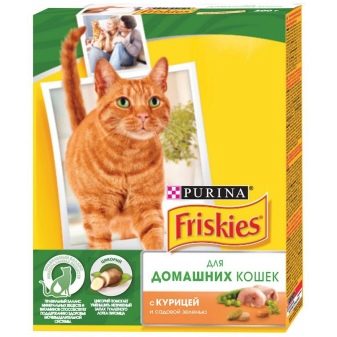
Consider one more fact: as soon as you transferred your pet to dry specialized food for sterilized cats, you should not change the diet to natural food, since you will hardly be able to do this without harming the animal's gastrointestinal tract.
Examples of professional diets include Royal Canin, Hill's, Eukanuba, or Proplan. These formulations must have a special Sterilized label on the packaging, which means “for sterilized pets”.
The more expensive options are very likely not to be categorized by pet category (neuter or not), but they are acceptable as they have higher protein quality than other pet foods. These are, for example, Now Natural, Go !, Acana or Orijen.
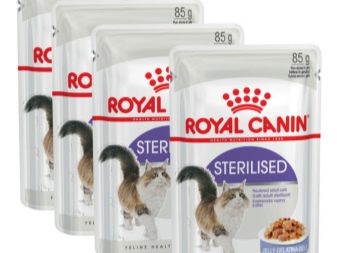
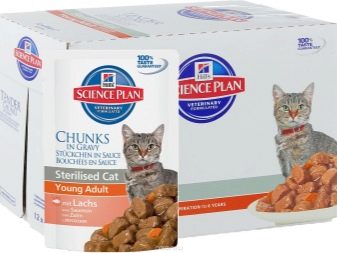
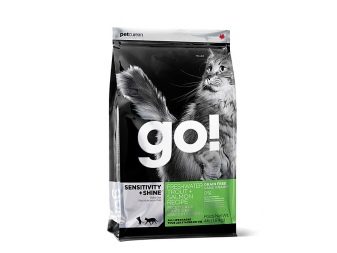

Top manufacturers
Nowadays, there are many nutritional options that have their own advantages and disadvantages. Sometimes it is very difficult to make a choice in favor of one type or another. Below is a list of the most popular producers of neutered cat food.
Premium feed
- Pro Plan. This brand is very famous, which makes it easy for a beginner to navigate in its intricacies. You can buy this brand of food at most dry food stores. It is appreciated by the owners for its very attractive price-quality ratio, and it is believed that this food is especially good for protecting the urinary system.There is also a variety of flavors in the line, which allows you to diversify your pet's gastronomic life. Experts discuss the ratio of proteins to fats (41% and 12%): some believe that it is harmful to the musculoskeletal system, others believe that it negatively affects the kidneys, although studies do not confirm these fears. Therefore, Pro Plan can be considered a very safe food. But do not forget that cats can sometimes be allergic to certain ingredients.
- Hill`s. This brand has an almost perfect vitamin composition, is also widespread and can be bought in most supermarkets. There is a range of flavors, allowing you to choose what suits your pet best. Veterinarians agree that this food is a good food option for a neutered animal.
- Purina One. This brand offers not only many tastes, but even a line of medicated feeds that differ in the composition of the components, which can be used in a finer selection of nutritional support for your pet after sterilization. Just like the two previous foods, you can buy it in almost any supermarket. Contains plant components (gluten and wheat proteins), which, according to veterinarians, can sometimes provoke digestive upset.
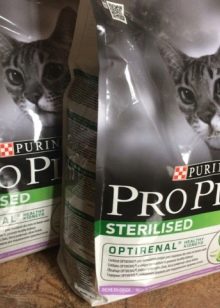
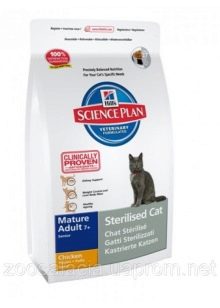
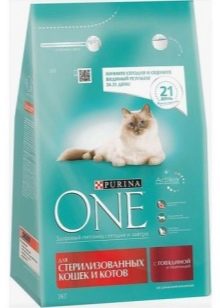
Super premium feed
- Royal Canin. The most famous brand of luxury food for cats. Differs in high-quality raw materials, a large range of varieties and tastes of food, varieties for feeding certain breeds of cats, as well as a low (for this price category) price. It is sometimes problematic to find it, and in animals there are episodes of allergy to the components of the composition. Experts advise on the packaging of food for spayed cats to look closely at the age for which it is intended. This food guarantees the optimal weight of the pet, dilution of urine and a decrease in the likelihood of stone formation.
- Bosch Sanabelle. This German food has enough natural meat in its composition, a relatively low cost, but is less common in pet stores and supermarkets. The composition contains antioxidants, but it is not always indicated which ones.
- Eukanuba. This feed contains a large proportion of animal protein and is distinguished by a relatively low price; there is a line of medicinal feeds. Cons: there are preservatives and additives, and the manufacturer does not specify the nature of these "animal proteins".


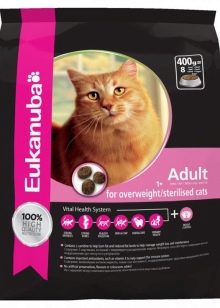
How to choose?
When choosing, first of all, it is necessary to evaluate the composition of the feed. The shorter it is, the better. The names should be clear to you, even if you are far from the chemical industry.
The primary component in the composition is the component that is the main source of protein, it is desirable that it be meat. The remaining components are listed in descending order of their proportion in the feed. Needless to say, there should not be any flavors, flavorings and the like in the feed - good dry food looks absolutely nondescript and is the most common brown granules.
Next, pay attention to the digestibility: the more saturated the food with nutrients, the less the cat needs to eat. Moreover, animals are forced to drink dry food, and they are reluctant to drink. Thus, the less food a cat needs to feed, the less water it will have to drink, the higher the digestion quality will be, thanks to which the animal will be provided with comfortable digestion.
The third criterion, very important for castrates, is the ability to prevent the development of diseases... For the prevention of urolithiasis, it is required to choose a feed with less magnesium, the correct ratio of phosphorus and calcium and a large amount of protein. Protein will acidify your urine and reduce the likelihood of stones forming.
To combat obesity, it is important to have fiber and protein in the feed, which support the feeling of fullness, a reduced proportion of fats, calories, and a lot of trace elements and vitamins. L-carnitine is often added to the feed to stimulate fat breakdown and muscle growth. If the food you are studying meets all of the above criteria, it can be fed to your cat.
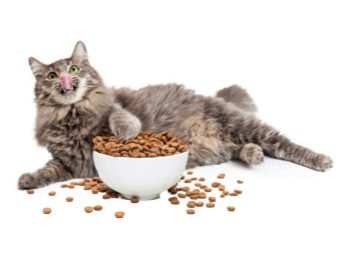
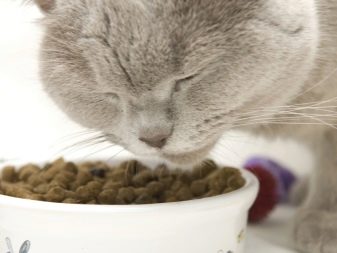
After you have picked up food for your pet, you should pay attention to whether it suits him. The food can be considered well selected if:
- the animal eats it willingly;
- the cat has a "shiny" coat, as a whole it gives the impression of being well-groomed;
- the regularity of the discharge of feces and the formation of feces, which will speak of the stability of the digestion process;
- a healthy body constitution is maintained.
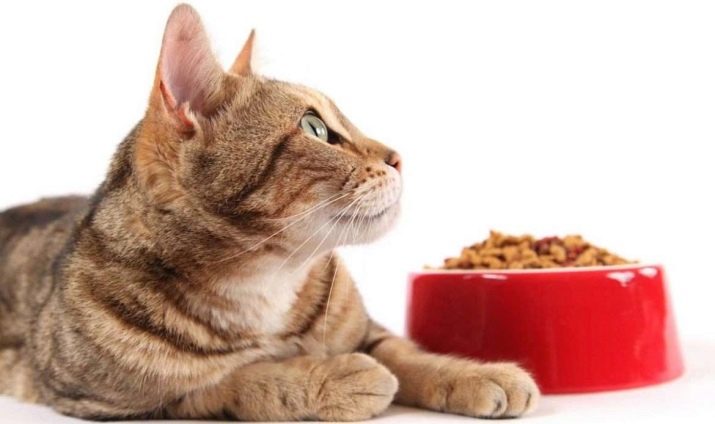
How to feed?
Feeding the cat should be carried out at least twice a day, moreover, it is advisable to bring the number of feeding episodes to five, giving food in small doses.
Dry food must be accompanied by clean and fresh water, moreover, there is a simple rule of thumb: water is three times the amount of food. You should not change the water to milk, as it will shift the nutritional balance in the mixture already selected by you or by the factory technologists. Feed should be given exactly in the amount indicated - no more and no less.

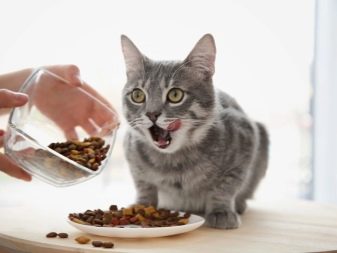
Read more about the nutritional rules for sterilized cats in the video below.
































